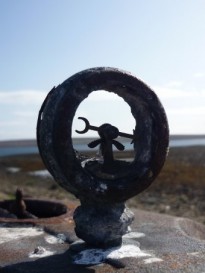September 2023 is the 10th birthday of the Society for One-Place Studies so, a little late in the day, I took up the #OnePlaceStudies10 blog prompt. Here is the second set of five short pieces on people from my one-place study in North Walls and Brims, chosen because of some event in their lives in September. (First 5 are here)
18 September – William Groundwater and Ann Ward
William G Groundwater married Ann Ward on 18 September 1879 in Stromness, Orkney, though both lived in Walls where William farmed at Mucklehouse (later called Ore) and Ann was from Summer Cleary. They married in a Free Church service so this may be the reason for Stromness though there was a Free Church in North Walls by this time.
In 1880 they had triplets, all girls, who sadly died soon after birth. This is the only set of triplets I’ve come across in Walls, does anyone know of others? Ann and William then had four sons who all survived to adulthood. Ann was already in her late 30s when the girls were born and lived to be 81, dying in 1924, despite her baptism record noting that she and her mother were “in bad health”. William died aged 79 in 1920, in Walls like his wife.

22 September – William Johnston and Ann Mckay
“William Johnston from Brims p. [parish] of Walls and Flotta, Orkney, to Ann Mackay, Dispoly” 22 September 1814, Reay Caithness, Old Parish Registers. Marrying a wife from “across the (Pentland) Firth” was not that uncommon in Walls. William and Ann had at least nine children; some are recorded in the Walls baptism registers (not well kept at all in the 1810s and 1820s) while censuses add the names of others.
Ann died in Brims in on 8 March 1870, said to be 72. William was a fisherman and/or farmer in the censuses (4 acres specified in the 1861 census). He died at Aith, South Walls on 23 March 1880, said to be 93. Ages for both vary in the censuses. There does not seem to be a baptism record for William while a 1793 baptism to parents at Connigill, Strath Halladale, a settlement south of Deasphollag, may be the right Ann Mackay.
The settlement of Dispoly or Deasphollag in Strath Halladale was cleared to make way for sheep at some point; it was part of the Bighouse estate not the Sutherland estate. You can zoom out from the map on the Canmore site linked above to see where Deasphollag is or locate Connigill (“Comgill”) on this older map.
23 September – John George Heddle
John George Heddle died on 23 September 1869 on the links at Melsetter “of a Gun Shot wound severing the Spine and passing into the abdomen caused by the accidental discharge of a fowling piece” (from his death record). He was 49 and the owner of most of the island of Hoy as well as the neighbouring smaller islands of Fara and Rysa.
His death seems to have been a very tragic accident while he was returning from shooting rabbits with one of his sons. The Orkney Herald reported that he was walking several yards ahead of his son who had a game bag with rabbits on his back and his gun under his arm half-cocked. “While proceeding in this manner it is supposed the dog must have observed a portion of one of the rabbits hanging out of the bag, as suddenly he leaped upon the young man’s back, and in falling to the ground came in contact with the stock, thus jerking up the muzzle of the gun, which going off at the same moment, its contents were lodged in Mr Heddle’s back.” (Orkney Herald 28 September 1869, p 2 col b)
John G Heddle’s parents were Robert Heddle of Cletts (South Ronaldsay) and Henrietta Moodie, daughter of Captain James Moodie of Melsetter. John’s son, John George Moodie Heddle (1844-1910) sold the Melsetter estate to Thomas Middlemore in 1898. More on the Heddles and Moodie Heddles.
24 September – Grace Cantley
Grace Cantley was baptised on 24 September 1835, youngest child of Nathan/Nathaniel Cantley and Margaret Moar/More/Moore. Her father was a Chelsea (Army) Pensioner and gardener at Melsetter (the big house for that estate) “for upwards of Eighteen years” (Walls OPRs). He was originally from Borgue, Kirkcudbrightshire in the far south-west of Scotland. The family lived in Saltness near Melsetter.
Grace married John Wilson, Scews, North Walls, in 1856. By October 1862 they had moved to the Crockness area. Grace died there on 6 February 1880 shortly after the birth of her ninth child.
28 September – George Sangster Bruce
George Bruce died on 28 September 1878 in Iquique, Tarapaca, Peru (now part of Chile). He had been “thrown into the water by the capsizing of a small boat”. At the time he was Master of the Ringdove, a barque owned by Messrs W & J Crawford, Greenock.
Son of Benjamin Bruce and Ellen Corrigill, Little Ayre, North Walls, George was baptised in 1831. Three brothers were also master mariners. In 1864 he married Jemima Ross, North Ness, and they had two sons, both of whom went to sea. After her death, he married again to Ann Malcomson, Crockness, in 1870. (Both wives from North Walls.) They had four children and the family remained in the Liverpool area after George’s death. #OnePlaceStudies10


Thanks for the Connigill mention and map links. I am working on a 'one place' study of Trantlebeg and one of the families includes Sydney MacKay baptised 1807 at Conighill. Further marriage and birth records include various spellings and I have had a hard time locating it – until your map links! The family removed to Trantlebeg between 1835 and 1837 so that may align with your mention of a clearance. Do you know where I can find more information on those clearances? Your post is well timed as I will be in Edinburgh this week with access to NLS. Thanks again!
Glad the post was useful to you. The Canmore website is often helpful in finding former settlements. I don’t have anything more on the clearance at the moment except that it seems to have been after the Mackay owners sold to the Duke of Sutherland in the 1830s – it’s on my list. I’ll try and let you know if I find anything.
Thanks, Jane. I'll let you know if I find anything as well.